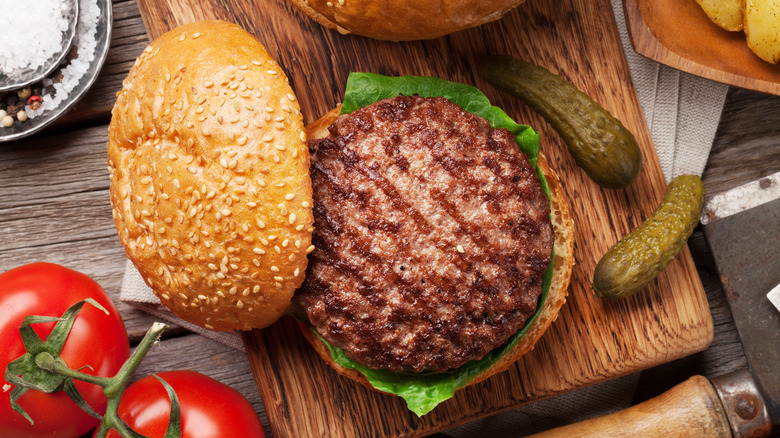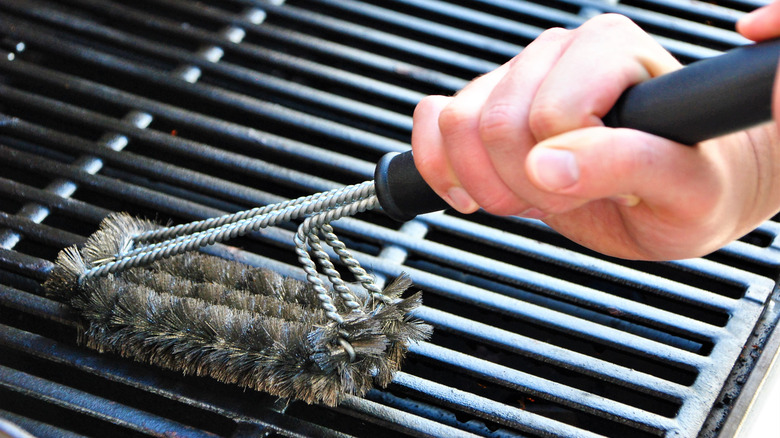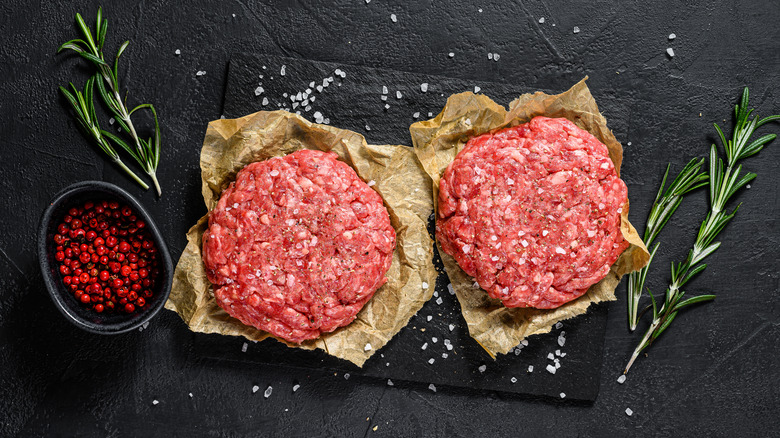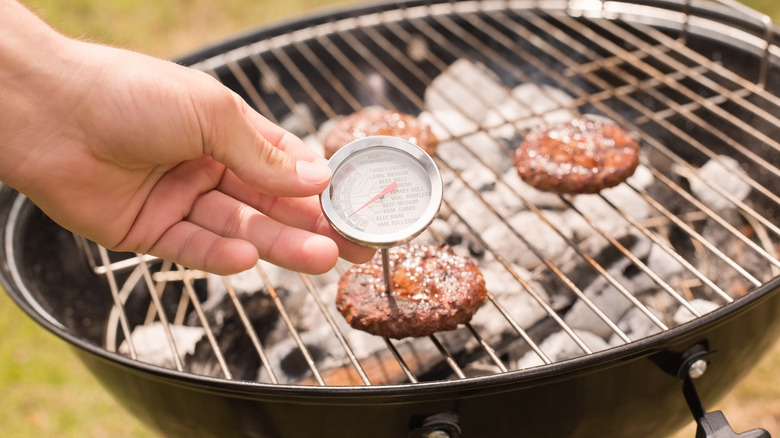Grillmaster Reveals What People Do Wrong When Grilling Hamburgers
Ahh, summertime, the season when we all abandon the kitchen in droves and take to the backyard to get in touch with our inner Bobby Flay. There's just something about building a fire and then actually using it to cook that makes us feel as if we've mastered some essential life skill that would have literally saved our lives a few millennia ago.
While most of us are partial to a nice piece of grilled chicken, a thick, juicy steak, or even a lightly-charred portobello mushroom, when you want a quick-cooking, budget-friendly, and versatile dinner option, there's nothing like a grill full of burgers (be they beef, turkey, or veggie). While grilling a good burger isn't all that difficult, there's always the danger they might turn out dry, tough, or burnt to a crisp. Dustin Green, grillmaster at Weber Grills, spoke with Mashed about some of the main mistakes made by new backyard chefs, and he offers his advice on how to grill a better burger.
Not preparing the grill
Grillmaster Dustin Green says it all starts with the grill, calling it "essential" to take the proper steps prior to cooking. If you just throw your meat onto cold grill grates, you're setting yourself up for a fail. Instead, he advises preheating your grill over either medium or medium-high heat (if you're using charcoal, try using just a moderate amount of coals) until it reaches a temperature between 425 and 475 degrees. "After 10 to 15 minutes," says Green, "any excess debris will burn off."
Just preheating the grill alone won't make it 100 percent ready to cook. Instead, once it's preheated, you should take your grill brush and clean off the grates. As Green explains, "This step is not only for cleanliness but also prevents your burgers from sticking." He does warn, however, that you shouldn't overheat the grill, since a grill that's too hot could result in a burger that's burned on the outside and still raw in the center when you bite into it.
Messing up the raw meat
Ground meat (or meat substitute) doesn't necessarily require that much preparation itself, but you will need to shape it into patties, and you may want to add some seasonings before you do. In fact, Green insists that you do. He tells us that "It's best to season your burgers when they're raw" rather than waiting to add flavor once they're done. "Basics like salt, pepper, and garlic powder add delicious flavor," he says, adding that chopped onions, ketchup, barbecue sauce, or Worcestershire sauce will make for juicier burgers.
While you're seasoning the burger meat, though, Green cautions against over-handling the meat. He suggests using a spoon to stir in the seasonings, explaining that "if you try mixing the meat and seasonings with your hands, the fat will activate and the meat will start to fall apart." While he does say you can use your hands to shape the patties, if you do a lot of burger grilling, you might want to invest in a burger press to ensure more consistently-sized patties that will all cook at the same rate. You can use your hands — well, your thumb — for the final touch, though: a thumbprint in the center of each burger that will help it hold its shape as it cooks. "Without it," says Green, "your burger can swell and turn into a meatball on the grill." If you don't want to use your thumb, you can make the indent with the back of a spoon.
Cooking at the wrong temperature
The secret to successful grilling — of burgers or anything else — lies in keeping track of the temperature. In fact, temperature control starts before you begin cooking. Once you've formed the burger patties, Dustin Green says you should either cook them ASAP or else stick them in the fridge. "If they sit out and are warm," he cautions, "they're more likely to stick to the grates." Once you do put the burgers on the grill, make sure you're cooking them at the proper temperature, which Green says is anywhere from 425 to 475 degrees. "If your temp is too low, you won't get any caramelization," he tells us, but adds "If your temp is too high, you'll overcook the burgers." He also mentions that the size thickness of your burgers will determine how long you should cook them, with a 1/4-pound patty taking about 3 to 4 minutes per side and a 1/2-pound burger taking 4 to 5 minutes per side.
If you want to make sure your burger is cooked just right, Green recommends you use a meat thermometer to take its temperature. Bear in mind that the USDA says ground beef must reach an internal temperature of 160 degrees in order to be considered safe to eat, while turkey burgers need to be cooked to 165 degrees. Plant-based burgers may vary depending on their ingredients, so follow the package directions for these.



